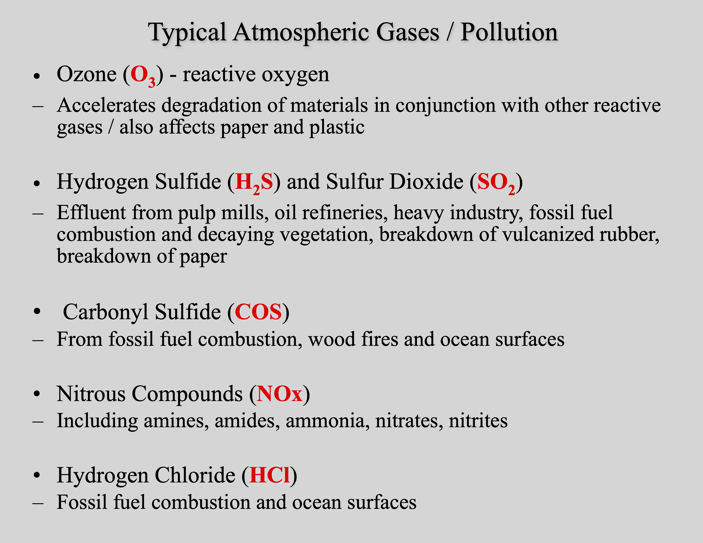“It is never possible to predict a physical occurrence with unlimited precision.” - Max Planck
Contamination of manufactured products is a broad-ranging subject. Let’s first review the definitions of “contamination” and, since even the definitions are topically wide, we’ve narrowed in to a couple that make sense for the manufacturing industry.
From Wikipedia: “Contamination is the presence of a constituent, impurity, or some other undesirable element that spoils, corrupts, infects, makes unfit, or makes inferior a material, physical body, natural environment, workplace, etc.
In environmental chemistry, the term "contamination" is in some cases virtually equivalent to pollution, where the main interest is the harm done on a large scale to humans, organisms, or environments."
"An environmental contaminant may be chemical in nature, though it may also be a biological (pathogenic bacteria, virus, invasive species) or physical (energy) agent."
That which damages humans will damage materials and products as well.
Astute engineers and businesses will also look at contamination from a legal perspective.
From Law Insider: “Contaminated Product means a product that contains a Prohibited Substance that is not disclosed on the product label or in information available in a reasonable internet search;
Contaminated Product means Product that has one or more of the following characteristics: (a) contains foreign substances not inherent or naturally occurring in Product; and/or (b) fails to meet Operator’s minimum specifications.”

From a legal position, the presence of rust / corrosion / oxidation on a manufactured part, assembly, or product may be considered a breach of contract.
Potential contaminates that are likely to cause corrosion and/or loss of performance include the following:
- moisture
- atmospheric gases; sulfur, chlorinated constituents
- volatile outgassing from materials and packaging
- contaminates left on surfaces from production; rinse tanks in particular
- molds and mildews
- dust
- fingerprints
- Insects and nesting
“I had always looked upon the search for the absolute as the noblest and most worthwhile task of science.” - Max Planck
Definition links:
https://en.wikipedia.org/wiki/Contamination
https://www.lawinsider.com/dictionary/contaminated-product
Choose Static Intercept Stock Bags for quick availability.
Liberty Intercept Blog
Contamination in Manufacturing: Definitions
Posted by Joe Spitz on Jun 14, 2023 12:25:19 PM
“It is never possible to predict a physical occurrence with unlimited precision.” - Max Planck
Contamination of manufactured products is a broad-ranging subject. Let’s first review the definitions of “contamination” and, since even the definitions are topically wide, we’ve narrowed in to a couple that make sense for the manufacturing industry.
From Wikipedia: “Contamination is the presence of a constituent, impurity, or some other undesirable element that spoils, corrupts, infects, makes unfit, or makes inferior a material, physical body, natural environment, workplace, etc.
In environmental chemistry, the term "contamination" is in some cases virtually equivalent to pollution, where the main interest is the harm done on a large scale to humans, organisms, or environments."
"An environmental contaminant may be chemical in nature, though it may also be a biological (pathogenic bacteria, virus, invasive species) or physical (energy) agent."
That which damages humans will damage materials and products as well.
Astute engineers and businesses will also look at contamination from a legal perspective.
From Law Insider: “Contaminated Product means a product that contains a Prohibited Substance that is not disclosed on the product label or in information available in a reasonable internet search;
Contaminated Product means Product that has one or more of the following characteristics: (a) contains foreign substances not inherent or naturally occurring in Product; and/or (b) fails to meet Operator’s minimum specifications.”
From a legal position, the presence of rust / corrosion / oxidation on a manufactured part, assembly, or product may be considered a breach of contract.
Potential contaminates that are likely to cause corrosion and/or loss of performance include the following:
“I had always looked upon the search for the absolute as the noblest and most worthwhile task of science.” - Max Planck
Definition links:
https://en.wikipedia.org/wiki/Contamination
https://www.lawinsider.com/dictionary/contaminated-product
Choose Static Intercept Stock Bags for quick availability.
Topics: American manufacturing, manufacturers, quality
Related Posts
Contamination Testing
Packaging's Crucial Role vs FOD
Customer Service with a Smile
Leave a Comment